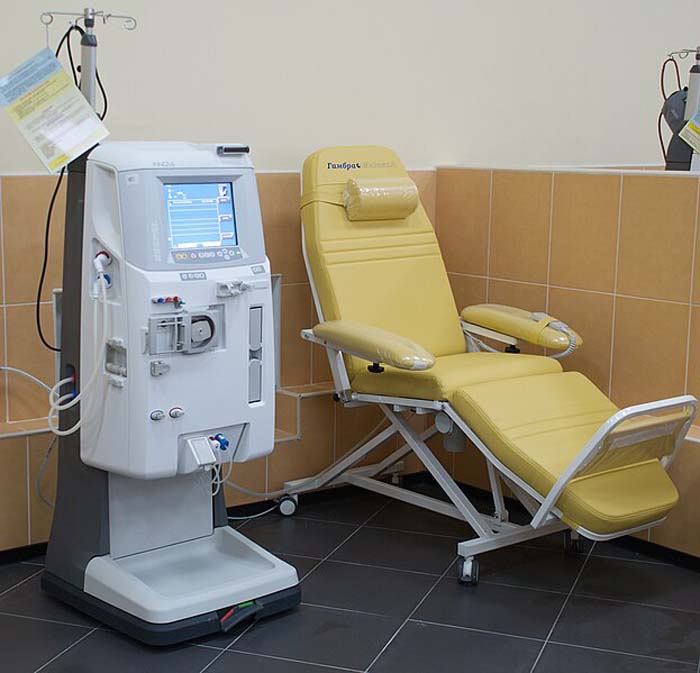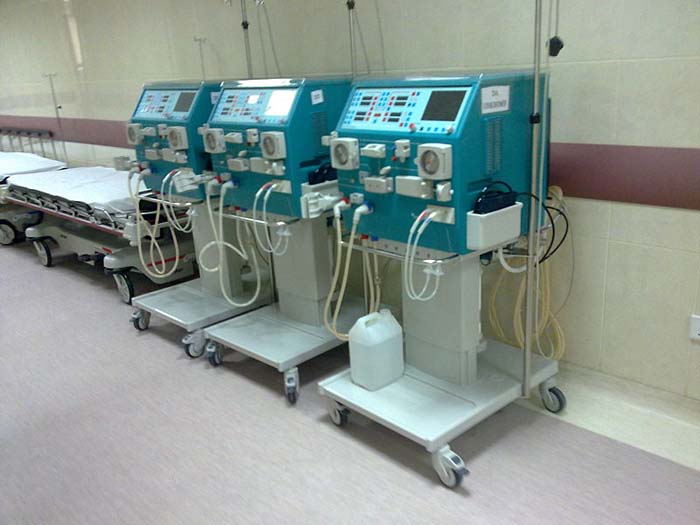
One medical procedure that uses a lot of water is hemodialysis. The water’s quality has a direct effect on both the patient’s safety as well as the effectiveness of the hemodialysis treatment. A semi-permeable membrane in the dialyzer (an artificial kidney) helps eliminate waste products and excess fluid from the blood. Hemodialysis utilizes dialysate, a water-based substance. A dependable and strong water purification system is essential for a hemodialysis facility. This is because of the huge quantity of water needed for each treatment session.
What are the methods of water treatment for a hemodialysis facility?
Because dialysis exposes patients to huge amounts of treated water, water treatment at a hemodialysis facility is essential. The water must be pure for patient safety, dialysis equipment protection, and water purity. A hemodialysis facility typically treats its water using the following methods:
Pre-treatment:
- Water Softening
The system prevents scale buildup in pipes and equipment by removing hardness (magnesium and calcium ions) from water through ion exchange.
- Activated Carbon Filtration
This product reduces organic compounds, chloramines, and chlorine, all harming patients and dialysis machines.
- Sediment Filtration
It effectively removes large materials such as rust, sand, or other sediments. This is often the initial phase of a more involved procedure.
Ozone Treatment:
- Some hemodialysis facilities use ozone to disinfect the water. Ozone, because of its high oxidizing power, is effective against microorganisms. People commonly use it alongside other techniques like ultraviolet and reverse osmosis for optimal results.
Deionization (DI):
- Diuretic (DI) systems typically serve as an additional or final step after RO in hemodialysis settings.
- This method uses ion exchange resins to get rid of ions from water, resulting in extremely pure water. Some hemodialysis facilities use it as an extra measure to guarantee very low concentrations of dissolved solids.
Ultrafiltration:
- The pores in the membranes used for this process are bigger than in RO but smaller than in sediment filters. The membranes’ purpose is to eliminate endotoxins, bacteria, and even some viruses.
UV Disinfection:
- UV light can render viruses and bacteria in water inactive or kill them. It has multiple applications, the most common of which is a last disinfection step before the dialysis machines use the treated water.
Constant Monitoring and Quality Control:
- To keep water quality consistent, equipment needs calibration, cleaning, and maintenance on a regular basis.
- Total dissolved solids, bacteria, chlorine, endotoxins, and chloramines are some water contaminants a hemodialysis facility must continually check. This ensures that the treatment system is up-to-date and functioning properly.
Reverse Osmosis:
- Reverse osmosis systems typically have extra pre- and post-filters to further purify the water and prevent damage to the membrane.
- This is the main technique employed when preparing water for hemodialysis. Using a semi-permeable membrane, RO can remove salts, viruses, bacteria, and other dissolved materials, ensuring that the water is very pure.
The importance of water quality for a hemodialysis facility.
In a hemodialysis facility, the water is very important. Hemodialysis patients rely on high-quality water to flush out extra fluids and waste. These patients are particularly vulnerable to health complications due to low-quality water. The water quality of a hemodialysis facility is critical for several reasons.

Prevention of contamination
Hemodialysis equipment uses large amounts of water to make dialysis fluid. If the water becomes contaminated with heavy metals, endotoxins, or bacteria, the patient risks infection, pyrogenic responses, and other side effects.
Regulatory Compliance
A hemodialysis facility must follow stringent water quality regulations. Guidelines from the relevant organizations define dialysis water pollutants. Adhering to these requirements is crucial to maintaining accreditation and ensuring patient safety.
Health Risks
There are several potential health problems associated with hemodialysis water contamination, such as:
- Problems with Electrolyte Balance
When electrolytes are out of balance, they can have a negative impact on muscle and heart performance.
- The Dangers of Heavy Metal Exposure
The buildup of metals in the body, such as copper, lead, or aluminum, can result in neurological or other systemic problems.
- Pyrogenic Reaction
Endotoxins may cause symptoms such as radiation sickness and a high body temperature.
- Infection
Bacteria can cause a bloodstream infection or sepsis.
Patient Outcomes
The quality of water used in hemodialysis. When patients have access to clean water, their treatments are more likely to be effective, improving their health and well-being.
Water Treatment Systems
Water treatment systems designed specifically for hemodialysis facilities guarantee that the water meets stringent purity standards. These might include carbon filtration, deionization, RO, and ultrafiltration. Routine maintenance and monitoring are necessary to ensure these systems produce water that meets or surpasses legal standards.
Equipment Longevity
When filled with high-quality water, hemodialysis machines last longer and work better. On the other hand, contaminants can cause corrosion, scale accumulation, and other forms of damage, increasing maintenance expenses and decreasing uptime.
Clean water is crucial for a hemodialysis facility’s success and safety for patients. Facilities must prioritize water quality maintenance and monitoring for hemodialysis patients for the best possible results.
Disadvantages of using contaminated water in a hemodialysis facility
Contaminated water poses significant health hazards and operational issues in a hemodialysis facility. Some important drawbacks are as follows:
- Greater Resource Usage and Higher Costs
It may be expensive to fix contamination problems. They require more employee training, water treatment, testing, and replacement equipment. This may negatively impact patient care and the ability to schedule appointments within the hospital.
- Septicemia and Infection
Bloodstream infections, which can be fatal, can be due to bacteria in the hemodialysis water. Because dialysis patients’ immune systems are already weak, and because these infections can enter the bloodstream so frequently through vascular access points, they can cause serious complications.
- Stricter Regulation and Potential Legal Action
Using contaminated water might result in legal responsibilities and regulatory infractions. Regulatory authorities set water quality standards for hemodialysis facilities. If the facility fails to maintain compliance, it may close, lose accreditation, or face penalties.
- Operational Damage
Infrastructure and dialysis equipment are vulnerable to contamination. Damage to dialysis machines and pipes from clogs, corrosion, and scaling caused by minerals and other impurities shortens their life and increases the frequency and severity of necessary maintenance.
- The impact on employee morale and the facility’s image
If a hemodialysis facility has a history of using polluted water, it can jeopardize the reputation and well-being of its employees. This might cause patients to lose faith in the practice, raising personnel turnover and making it harder to bring in new business.
- Dangers to Patients’ Health
Dialysate and the machinery used to rinse it requires enormous amounts of water, which means that hemodialyzed patients are exposed to these waters. Patients are at risk of infection from heavy metals, endotoxins, bacteria, and pesticides in contaminated water. Introducing these pollutants into the bloodstream during dialysis increases the risk of inflammatory reactions, infections, and endotoxemia, among other problems.
A hemodialysis facility can reduce its vulnerability to these threats by following stringent water quality regulations, conducting regular water quality tests, and calibrating all equipment. It is crucial to check the facility regularly and respond quickly to contamination issues to guarantee facility compliance and patient safety.
Conclusion
The water treatment system of a hemodialysis facility is a crucial and complex component that guarantees patients receive reliable, effective, and safe treatment. Providing high-quality care in these facilities relies on compliance with regulations, frequent monitoring, and proper maintenance.
